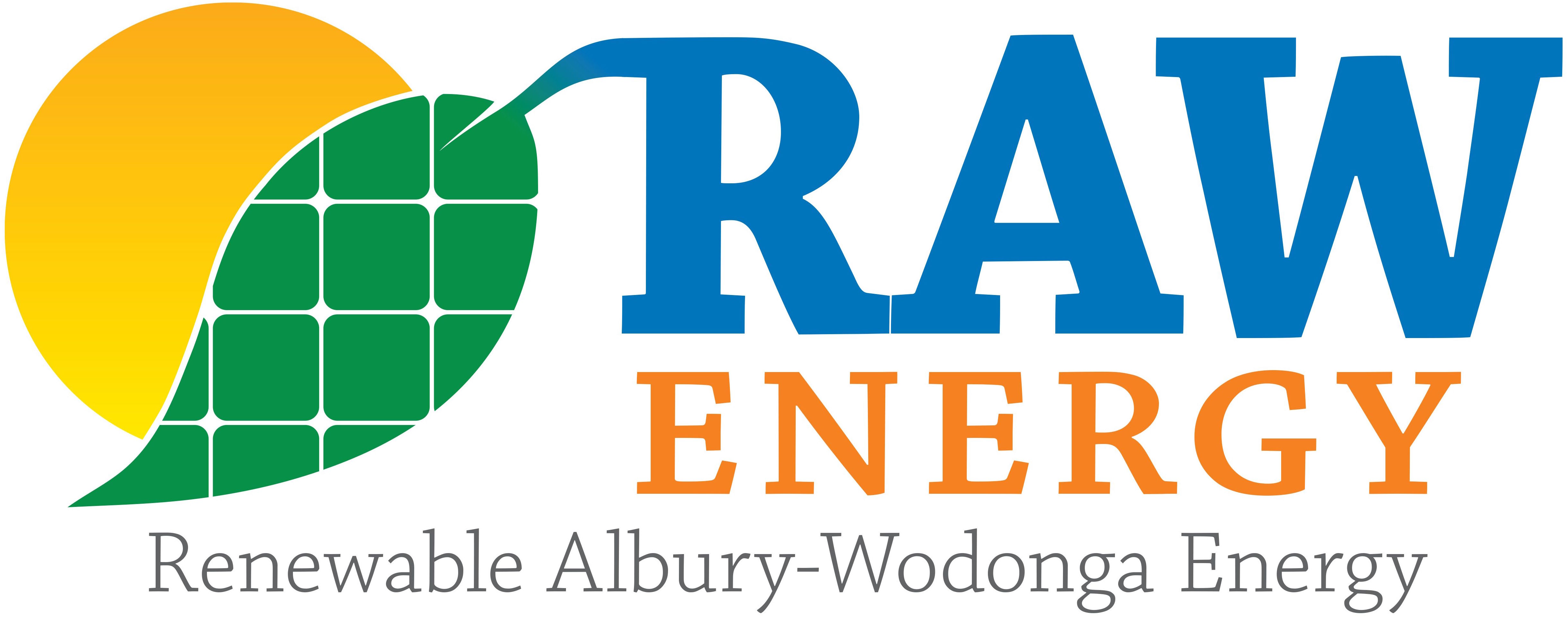
All of Australia's clean energy needs could be covered by the Hume region alone if the potential for pumped hydro storage was realised, according to a new report.
And it's just one kind of energy production explored in the Hume Region Renewable Energy Roadmap.
Planning for a renewable future was a goal of the 2016 Goulburn and Ovens Murray Regional Partnerships that received state funding.
A year of work lead by project officer Tom Brown, including a social media campaign and 30 community development projects, culminated in the launch of the plan this week.
The Border Mail sat in on a coach tour on Friday, exploring the region's existing and emerging renewable energy industry.
Hydroelectricity
The region's history in this space dates back to the 1920s with the Rubicon Scheme, and the "pioneering project" that was the Kiewa Hydroelectric Scheme.
Today the three generators at Kiewa have the capacity to generate 392 megawatts, enough for more than 100,000 homes.
There are also hydroelectricity generators at the Hume, Eildon and Dartmouth dams, and at the Yarrawonga Weir, and in total 780 MW of hydro is created across the region.
But a recent Australian National University study identified 151 potential off-river sites for storage, including in Tallangatta and Yackandandah.
"The Hume region, if we fully develop pumped hydro opportunities, would have 13 times the amount of energy storage Australia needs to support a 100 per cent renewable grid," Mr Brown said.

Source: Hume Region Renewable Energy Roadmap 2019. Pictured is Totally Renewable Yackandandah's Matthew Charles-Jones on his rooftop in 2016.
"Pumped hydro allows us to move energy from a point in time where we have too much, to a point in time where we need more."
But, as identified in the roadmap, the network would need upgrading to cater for this energy.
Power flows to the grid through a 220 kV line from Shepparton to Wodonga, a 330 kV line from South Morang to Dederang and to New South Wales, and five major electrical terminal stations including at Mt Beauty and Wodonga.
The Australian Energy Market Operator is undertaking three regulatory investment tests for transmission (RIT-T), Mr Brown said.
"One would upgrade the 330 kV line that is a very important connector between Melbourne and Sydney," he said.
"Currently that's at maximum thermal capacity - when you run electricity through cables they become hot - and that would be a $128 million upgrade.
"Long term, there's starting to be talk about building a new connection at Kerang.
"It's (the RIT-T) a really big economic analysis of 'If we build big power lines and that costs $100 million, will that infrastructure deliver more than that in economic benefit for the community?
"There is speculation about whether the test process is set up well enough to anticipate long term needs ... that's part of the national debate."
Power from sun
The roadmap identifies that the Hume, which stretches from Shepparton to Corryong and Eildon to Yarrawonga, "has the highest number of community energy groups within a single region in Australia".
From the ground-breaking Totally Renewable Yackandandah, to a similar group in Rutherglen that has just joined the North East Community Energy Network, there are 13 groups in action taking advantage of the second-highest solar radiation in Victoria.
Shepparton, Moira and Wangaratta have the most panels on roofs, followed by Wodonga and Indigo (both about 13,000 kW).
Solar on rooftops alone generates 154 MW - more than the Numurkah Solar Farm.
The coach tour visited the 100 MW site, which is Victoria's largest solar farm and was officially launched in recent months.
Now heading to Numurkah Neoen solar farm pic.twitter.com/C8aTMNpsIC
— Ellen Ebsary (@EEbsary) August 2, 2019
Developed by French company Neoen, it was built over eight months by Downer, who continue to run it.
During construction, 300 people were employed and only eight trees were removed.
Across 525 hectares are 373,000 panels that rotate every 12 minutes to follow the sun, as 300 Merino sheep graze underneath.
Large scale-solar projects in the region will increase, with there being a total of "2700 MW of expressed interest in further solar development connection interest in Hume" worth $4 billion.
Developers of 16 other large-scale solar projects have made connection inquiries to AEMO, including four who have lodged applications, all within the Wangaratta, Benalla and Shepparton areas.
Glenrowan is included in that, and the coach passed the site of the proposed 140 MW facility on the Hume Freeway.
"Because of the Glenrowan terminal station, there can potentially be a lot of solar here," Mr Brown said.
"There are a couple pockets in the region, this is one and near Shepparton, where the ability to connect solar farms to the network means there is a clustering.
"That will mean this area has to think about proposed solar development and how we manage the cumulative impacts."

The roadmap explains solar farms each require land the size of 100 football fields, with developers having interest mainly in the Shepparton, Moira, Benalla and Wangaratta municipalities.
It states "solar developers active in the Greater Shepparton and Moria local government areas need to closely consider" the importance of agricultural land in the Hume.
"The proposed locations of large scale solar farms need to carefully address the existing agricultural value of proposed sites.
"Clustering of large-scale solar farms around available grid connection areas is a growing trend in the region - understanding how we manage this demand and possible local impacts is important."
The Goulburn Murray Irrigation District, covering an area of interest to developers, is strategic agricultural land and is "sensitive to significant land use change".
Hundreds of community members right across the North East and Southern NSW have raised concern about the impact of solar panels covering productive agricultural land.
Bioenergy
Organic material of plants and animals can generate electricity and heat, or be used to produce transport fuels.
The Hume is ranked third-highest for availability of biomass residue generation in Victoria, because of extensive agricultural and forestry industry waste.
Australia's largest renewable biodiesel producer reopened at Barnawartha last month and will produce up to 50 million litres each year.
There are biogas plants in Shepparton and Tatura, supplying power to 1700 homes.
The Shepparton Diamond Energy BioGas facility is the second largest like it in the Southern Hemisphere.
In close partnership with Goulburn Valley Water, it uses wastewater generated by the community, and the food processing industry (like SPC).
Nineteen covered lagoons capture methane and other gases.
Those gases are cleaned of numerous elements, including hydrogen sulfide, and go to the Diamond Energy generator which creates the electricity that is sent into the network.
When the generator was first commissioned in 2009, it was running during network peaks but is now operating 24 hours and produced 4000 MWh last year.

INDUSTRY: The coach tour visited the Diamond Energy Biogas facility in Shepparton, and then the Numurkah solar farm and the AGL power station at the Yarrawonga Weir.
The Hume Renewable Energy Roadmap points out bioenergy can be valuable in "firming" - adding supply that can be relied on at particular times to support solar and wind.
"Waste management and recycling regulations and the impact of bioenergy projects needs to be considered very carefully to minimise barriers to this emerging industry," the plan states.
Emerging
While wind is probably among the first renewable energy sources that come to mind for most people, it does not have a history in the Hume region, largely due to geographical constraints.
The parts of the region that have the highest wind speeds are "mountainous, difficult to access, and subject to bushfire risk".
However, the region's first wind farm, near Seymour, is hoped to be operational in 2020.
Sixteen wind turbines across four host farms will generate 57.6 MW, enough to power 37,000 homes.
The roadmap identifies many more opportunities "for example, solar thermal, and green hydrogen as a fuel".
It also puts distributed energy resources - resources that are connected only to the local distribution grid - as a top priority.
"There is real potential for Hume's towns and communities to become a larger-scale co-ordinated distributed energy network."
Originally published by the Border Mail here.
